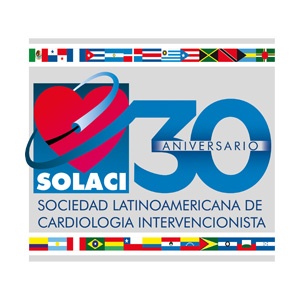Permanent pacemaker implantation (PPI) is a relevant complication in patients undergoing transcatheter aortic valve replacement (TAVR) despite there being new devices. The current information on the long term impact of this complication remains unclear and recent evidence suggests post-TAVR ventricular pacing (VP) might be associated to higher risk of all-cause mortality and hospitalization for cardiac failure.

In addition, we are well aware of the long term negative effect of right ventricular pacing on left ventricular remodeling and the associated increased risk of atrial fibrillation and cardiac failure (CF). ≥40% VP percentage has been associated to higher risk of both cardiac failure hospitalization and atrial fibrillation. Data on post TAVR VP are scarce and limited to high risk patients.
The aim of this observational, retrospective, multicenter study was to assess the link between pacemaker dependency or high VP percentage with adverse outcomes after TAVR.
Primary end point was a composite of cardiovascular death or first hospitalization for cardiac failure according to VP percentage. Secondary end point was primary end point components plus all cause death, changes in left ventricular ejection fraction (LVEF) and changes in NYHA functional class at one year.
The study looked at 377 patients, 65.6% with dual chamber PPI and 34.4% with single chamber PPI. 58% of the latter presented VP ≥ 40% and 42% VP <40% at 6 months. Mean age was 83 and 50.4% were women. Mean mortality STS score was 5.49. Patients with VP ≥40% were older, had lower LVEF and higher LV volume. Self-expanding prosthesis were the most frequently used in this group of patients.
Read also: EuroPCR 2023 | TAVR in TAVR Results with Balloon-Expandable Valves.
As regards primary end point, the composite of cardiovascular death or first CF hospitalization was 28.2% among VP ≥40% patients and 11% in VP<40% (P<0.001) patients. After multivariable adjusting, VP≥40% was significantly associated to higher incidence of primary end point outcomes (HR: 2.76; 95% CI: 1.39-5.51; P = 0.004). When it came to the secondary end point, first hospitalization incidence (P<0.001), all-cause mortality (P=0.02), and cardiovascular death (P=0.16) were higher in the VP ≥40% vs. VP<40% group. Again, after multivariable adjusting, VP≥40% was significantly associated to higher incidence of CF hospitalization (HR: 3.37;95% CI: 1.50-7.54; P = 0.003) and CV death (HR: 3.77; 95% CI: 1.02-13.88; P = 0.04) while there was no link to all-cause mortality (HR: 2.17; 95% CI: 0.80-5.90; P = 0.13).
After one year, VP≥40% patients had lower LVEF vs VP< 40% patients (54% ± 10% vs 60%± 8%; P <0.001). Also, VP <40% patients saw significantly improved LVEF after 1 year (58.0% ± 9.3% a 60.10% ± 8.0%; P = 0.008), while VP ≥ 40% patients saw no LVEF improvement (P=0.18). looking at NYHA functional class at one year, VP≥40% patients showed the worst functional class vs. VP <40% (P=0.009).
Conclusion
TAVR patients requiring PPI with VP ≥ 40% are at higher risk of cardiovascular death and hospitalization for cardiac failure compared against patients with VP <40%. These findings recommend minimizing right ventricular pacing percentage through adequate planning in post TAVR patients with no persistent AV block. Further study is required to be able to access the potential benefit of a more physiological VP in patients that will require high percentage of right ventricular pacing.

Dr. Andrés Rodríguez.
Member of the Editorial Board of SOLACI.org.
Original Title: Impact of Right Ventricular Pacing in Patients With TAVR Undergoing Permanent Pacemaker Implantation.
Reference: Francesco Bruno, MD et al J Am Coll Cardiol Intv 2023;16:1081–1091.
Subscribe to our weekly newsletter
Get the latest scientific articles on interventional cardiology




